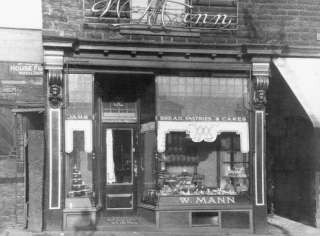

Section 2. How can we use maps to explore how our area has changed?
Children should learn:
- that the area has changed at different times in the past
- to sequence maps in chronological order
- to use maps to help describe some of the characteristic features of the past
Activities
Divide the children into small groups and give each group copies of two maps of the same area – one from the present and one from a chosen period in the past. Ask the children to look for and record changes by comparing details shown on the maps, such as roads, railways, housing, open spaces and amenities.
Queens Road New Connection Church was demolished and is now the site of Bibby’s Engineering. Behind it was Queens Road Sunday School.
What is there now?
New Bond Street exists but where was Bond Street, the site of the first Mackintosh Warehouse?
Use OHT acetates on top of the maps of the locality in the past to record roads and the use and range of buildings. Compare this OHT with one from the present. What buildings have appeared or disappeared? How has the type of building changed over the period?
Help the children to build up a ‘picture’ of the past: choose the same two points for children to ‘walk’ between on each map, and ask them to describe what can be seen, heard or even smelt today. Ask them to describe what might have been seen, heard, smelt on the same ‘walk’ at different times in the past.
53 King Cross Street was demolished in 1969 to make way for a new road
layout. Look at how the road layout was before 1969 and how it looks now.
What is the main difference?
Outcomes
Children:
- record changes shown on maps in table form
- contribute to making a visual time line
- produce a description of the area that contains appropriate historical detail
Points to note
The teacher could help the children use maps from different periods by selecting reference points (such as a shop, church or school) to look for on all the maps.
Have a selection of reference materials relating to the period available.


